
Books and other children's writings by Wendy Lewis.
This article is based on an interview conducted in Toronto, ON, on November 25, 2000.
Wendy A. Lewis
Profile by Dave Jenkinson.
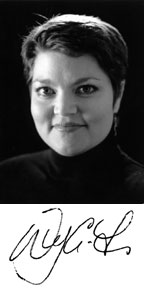 "From as far back as I can remember, I wanted to be a writer. I was a shy, quiet child who didn't talk much about such things, but I was an absolute bookworm. My mother says from the time I started reading, she hardly ever saw me -- I'd be tucked into a corner or on a tree branch with a book. On my birthdays, when I'd blow out the candles, I'd wish to some day be a published writer. I wished that right up to my 30th birthday because that was the goal I'd set for myself -- to be published by the time I was 30."
"From as far back as I can remember, I wanted to be a writer. I was a shy, quiet child who didn't talk much about such things, but I was an absolute bookworm. My mother says from the time I started reading, she hardly ever saw me -- I'd be tucked into a corner or on a tree branch with a book. On my birthdays, when I'd blow out the candles, I'd wish to some day be a published writer. I wished that right up to my 30th birthday because that was the goal I'd set for myself -- to be published by the time I was 30."
"I was very much influenced by the books of Lucy Maud Montgomery. I loved her 'Anne' books, of course, but I especially loved Emily [of New Moon], who became a writer. Even now, when I check the mailbox, I always think of what I learned from LMM -- slim letters mean acceptance, but fat parcels with the manuscripts enclosed mean rejection."
"I was born in Ottawa, Ontario, on February 10, 1966, but we moved to the country when I was six. We lived on a 25-acre rambling farm (no animals, just dogs) with a lovely old farmhouse that we renovated and a broken-down barn that I loved to explore until it had to be torn down because it was dangerous. When I was 11, we moved to Uxbridge where I lived through my high school years until I went to the University of Toronto. I lived in a couple of other places (Richmond Hill, Aurora, and Markham) before finally moving back to Uxbridge with my husband to raise our two daughters."
"In high school, I realized that English was what I really loved. We were fortunate because two different Grade 13 English classes were offered, and I took both. One was the regular course -- a cross-section of literature with an emphasis on British and American writers -- while the other focused solely on Canadian literature. The second course was especially important; I hadn't realized there were so many wonderful, published Canadian writers. Maybe, I hoped, it could happen to me."
"In university, I studied English literature. There weren't, unfortunately, any creative writing courses, but I did take a course in rhetoric which helped me organize my thoughts logically when writing papers. In third year, I took a half-credit course in children's literature that I loved. The best part was getting to read Winnie-the-Pooh all over again."
"The large classes at U of T can be daunting. I hardly ever spoke up in class. I'd receive papers back with comments from the profs saying things like: 'Your arguments are very interesting. I wish you would share some of your ideas in class.' And I'd think, 'Oh, I can't do that. Sorry.' Then, in fourth year, I took a course about linked collections from Professor David Blostein. There were only about five people in the class, and we met in one of the Victoria College lounges with cosy chairs and a fireplace. All the books we studied were Canadian -- authors like Gabrielle Roy and Margaret Atwood. That course is what first got me thinking about linked collections, and years later, I wrote one of my own, Graveyard Girl."
"I graduated with a B.A. in 1988 and took a few months to write. I actually finished a short story (for the first time in my life!), and submitted it to the Toronto Star short story contest. It wasn't one of the three winners, but it was published as a 'Judges' Choice.' I was encouraged enough by that to finish a second story, which I submitted to the same contest the following year. When it didn't get published, I did a foolish thing -- I hardly wrote another word for the next six years. Now, if young people ask me, 'How do you become a writer?' I say, 'Write, write and write more! Writing is a craft that you learn, over time, by practising . . . A LOT.'"
"In early 1989, my mother and I opened a retail store. I thought, naively, that I'd have plenty of time to write stories when the store was quiet. That didn't happen. The recession came, and financially it was a challenging time. I had to devote my creative energy to the store just to keep it afloat. Until you get the word that you're going to be published, in the eyes of your family and even in your own eyes, it's hard to justify any time you spend writing."
"We closed the store in 1993. I went to Seneca College for a year and took Corporate Communications. One of my work terms was at Black Creek Pioneer Village, where I got to spend two glorious months in their library, researching and writing articles and news releases. They let me write some fictional stories as well (rooted in fact) about the buildings. I actually
started a novel set in the Pioneer Village and the Jane-Finch area of Toronto."
"After graduating from Seneca, I accepted a job at a large retirement community in Don Mills coordinating their public relations, marketing and sales. It was a demanding, time-consuming job. Sometimes I'd be working from 7:30 am to 10:30 pm, and there wasn't much time or energy left to write fiction."
"It was during that time that I attended the 'Word on the Street Festival' in Toronto and heard Robert Munsch tell his stories. That was the first time I'd ever heard a children's writer perform. I was standing in the audience with -- I'm embarrassed to say -- tears pouring down my cheeks, thinking, 'Oh my gosh, this is what I want to do! This is where my energy should go.' Being there with so many children and their parents and seeing the looks on their faces, knowing how much his stories and words meant to them, that's what I'd wanted from the time I was reading L.M.
Montgomery's books. To write something that touches young people in that way and stays with them for many years -- that's my dream."
"That day I also found out about the Canscaip 'Packaging Your Imagination' Workshop, which I attended in the fall of 1994. That was the true decision-making day because I discovered this active community of people who are passionate about children's books, and I knew that was
where I belonged. I signed up for Peter Carver's 'Writing for Children' class in the spring and wrote so much during that ten week class. I still had that demanding job, but I loved writing so much I'd work through the night or get up at 2 a.m. to write. And every week I would give Peter
some horrible thick manuscript to read, and he would laugh."
"During that spring term, I discovered I was expecting a baby. We were saving to buy a house and were moving to Uxbridge, and I knew I couldn't write much in that time. However, I had begun thinking about the Graveyard Girl stories, and that's why they spilled out so quickly after
the birth of my daughter. I went on maternity leave in January, 1996, had Amelia in February, and wrote the stories the next month. One reason I wrote the first draft so quickly was because I knew that Peter's advanced workshop was for writers preparing manuscripts for publication. I thought
I couldn't show my face if I didn't have a 'book.' The class started in April, so that was my deadline. I always joke that I gave birth to a baby girl and twelve short stories."
"I workshopped the stories in class, gave them to Peter, revised them, and gave them back to him hoping he would consider them for publication. [Peter Carver is the children's book editor for Red Deer Press.] When he gave them back again with comments and feedback, what I understood misunderstood actually -- was that he didn't want to publish them. So I sent them to three other publishers. One responded saying they'd like to do the collection in 1998 but needed Canada Council funding in order to do so. They held on to them for nine months and put me off a bit by not returning my phone calls. I realize now I should have been more patient, but I was getting edgy. Finally they told me they couldn't publish them in 1998 and wanted to consider them for 1999 publication, but they would understand if I wanted to submit them to another publisher in the meantime. So, in the fall of 1997, I again gave them to Peter who accepted them on behalf of Red Deer Press. They were going to publish them in 1999, but with Rick Book's Necking with Louise being published, Red Deer Press decided to bump Graveyard Girl to 2000 so the two books of short stories wouldn't compete."
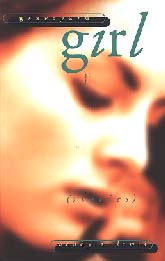
"In retrospect, I'm happy about the delay because I think what happened in the rewrites of the stories in 1999 made them a lot better. Also, with the Royal Wedding motif, the final story takes place on the day of Prince Edward's and Sophie Rhys-Jones' wedding, which happened in the summer of 1999, and I couldn't have done that earlier. There were a couple of stories in the collection that Peter felt weren't as strong as the others, and we ended up scrapping them. One, 'The Manse,' was set in L. M. Montgomery's manse in Leaskdale, Ontario, just north of Uxbridge. Imagine, here's this wonderful writer who really influenced me, and she lived just 10 minutes away."
"One story that I'd rewritten was the one that's now called 'The Puzzle.' It used to be called 'Map Maker,' but when Peter got the revisions back in December, he still felt it was weak. I felt strongly that the character and voice of that story belonged in the collection, so Peter said I could have one more shot at it. I got through a busy Christmas with my little ones, and on December 26, without looking at the previous drafts of the story, I wrote a whole new version (my deadline for getting the revised stories to Peter was December 31.) The Zen Buddhism thread and the haiku were brand new. Peter liked it -- phew -- and the story appeared in the book. 'Rabbits' was brand new. The Derek character hadn't had a story of his own before, and, as the antagonist, he, of course, needed one. I wrote 'Rabbits' just two months before the final deadline."
"I spite of the fact that the stories, for the most part, were written so long ago and seemed to sit around for a long time before publication, there were an awful lot of last minute things that happened. As I originally wrote them, the stories were linked geographically with most of them set in or around the fictional town of Lee. Most of them also had a supernatural element, but since Sarah Ellis had published her wonderful collection of supernatural stories in the interim (Back of Beyond), I played down the mystical content and focussed instead on character and voice."
"'The Hag Stone,' probably the most different from the others, was told in third person narration and was for younger readers since the main character, David, was 12. The story had no romance at all, and it wasn't told in free verse. Actually, I first wrote that story in Peter's 'kindergarten class' as an exercise. After I read it to the class, I glanced up ( you don't look up WHILE you're reading because people might be sleeping or yawning), and Peter had a big smile on his face. Later, when he gave me a 16-page document about what needed fixing in the Graveyard Girl stories, he said, 'As it is, "The Hag Stone" doesn't fit with the others,' but said he always liked the story and wanted it in the collection. He's a wonderful editor. He points out inconsistencies, but
leaves it to you to figure out how to solve the problem."
"When I was doing the rewrites, I made a big chart of all the characters and how they fit together, who was friends with whom, what year they were born in, and what role they played in the Royal Wedding. For example, it says, 'In 1983, Mitch is four years old, and a flower girl in the mock
wedding. Her mom leads the hairdressing team.' There are all sorts of details like that about your characters that never make it into the stories, but I think it's important for the writer to know them. I did this kind of thing too with the Royal Wedding picture. I put the names of the characters on the picture and realized, 'David was this page boy, Anna was this bridesmaid, and so on.' I kept the labelled wedding picture on the wall behind the computer and referred to it often."
"What I tried to do in Graveyard Girl was create a snapshot of young people in a small town. I've always been fascinated by projects, like a play, that kids are working on. You look around, and see the range of personalities: there's always a shy person, the bubbly, outgoing one, the
athletic jock, and so on. I don't mean stereotypes; I hope the characters in Graveyard Girl have more depth than that."
"The idea of the royal wedding came when I sat down to rewrite and link the stories more closely. Things happen and go into your subconscious, and you don't realize until afterwards why. Years ago, long before the movie, my sister, Kelly, who was a teacher-librarian at the time, organized a school-wide project on Titanic. Every class and every subject in the school was involved. I knew that with projects like this, there is always interesting stuff going on beneath the surface, even though the people participating seem enthusiastic."
"I like writing about characters in their teen years, when relationships, whether with other young people or family members, are so important. I'm also interested in how the fairytales we grow up with are buried in our subconscious and come back to haunt our relationships later in life. I was in high school in 1982 when Prince Charles and Lady Diana had their 'fairytale wedding,' and I remember the fervour across the country and the world. In the years that followed, I was interested in what happened to them. Diana's death affected me very much because I, too, was a mother, and Diana was close in age to me. When Prince Edward and Sophie Rhys-Jones announced their engagement, I realized, 'What a gift! What a wonderful way to bring the Graveyard Girl stories full circle. The collection will begin in 1983 with the restaging of the royal wedding that everybody thought was perfect, that went sour, and will end in 1999, with quite a different royal wedding.' Everyone compared Sophie Rhys-Jones to Princess Diana. They looked alike, but Sophie was older and wiser."
Although the recreation of "The Wedding of the Century" by the graduating class of 1983 is the principal linking element, the collection's 10 stories are subgrouped into two time periods a decade apart. Wendy explains how the grouping came about. "The 'K is for Kristmas' story had to take place in more recent years because the family had a personal computer. I knew 1993 would be about right. Then, looking at the wedding pictures, I realized it would be interesting to have some characters in their teens when the event takes place and see how it's affecting them in the near future, and then others, for whom the event is part of their past, but still resonates years later.'"
The stories in Graveyard Girl came about in different ways. "I don't usually start with character. I know some writers do and then the story grows from that. With me, it's usually an odd thing, an image or phrase or actual event, that simmers in the back of my mind and some day becomes a story. For example, when I was 16, I did come to Toronto from the little town of Uxbridge with three girlfriends. We stayed at the Sheraton Hotel and ended up quite unexpectedly at the Brass Rail, a strip club. Sweet shy little Wendy went in, and I always knew that some day I would have to put that experience in a story. 'Revelations' grew out of that." Wendy admits that "Like Mandy, I did swim in the pool but not nude. That's the lovely thing about fiction. You can change what you like." In 2001, "Revelations" was the recipient of the Vicky Metcalf Short Story Award presented by the Canadian Authors Association, and the entire collection was shortlisted for the Canadian Library Association Young Adult Book of the Year Award..
"In the story, 'You Never Know,' the grandmother with Alzheimer's says, 'You never know from where you sit where the man on the balcony will spit,' which seems like a long thing to come out of the mouth of a person with Alzheimer's. That actually happened. It was my own grandmother who had barely spoken for months. She had all sorts of sayings and superstitions. We were sitting at the table having tea, and that sentence came out of her mouth just like that, from start to finish. I had never heard it before and have never heard anybody else say it since."
"Other stories grow out of mysterious pictures or tidbits of information I pick up. I wanted to write about stones and read in one of my reference books about 'hag stones' which people used to hang on their bedposts to chase away the hags that bring bad dreams. 'The Hag Stone' story grew out of that, as well as from an illustration in Chris Van Allsburg's book The Mysteries of Harris Burdick, that had the caption, 'He threw it hard, but the third skipping stone kept coming back.'"
"I was married once before when I was 19 (young and foolish) and divorced when I was 22, and I think that experience comes into 'Tango.' My second husband, Rob, and I eloped and went to England and Ireland for our wedding trip, and I made a lot of reference to my travel journal when I was writing 'Loose Chippings.' I don't keep a diary or journal at any other time, but when I travel I do because I forget all those wonderful details. Like Frances, we did drive around, but we took a different route. I had the information and anecdotes from my journal and incorporated
phrases that I heard, like, 'Aye, she's for the men that one.'"
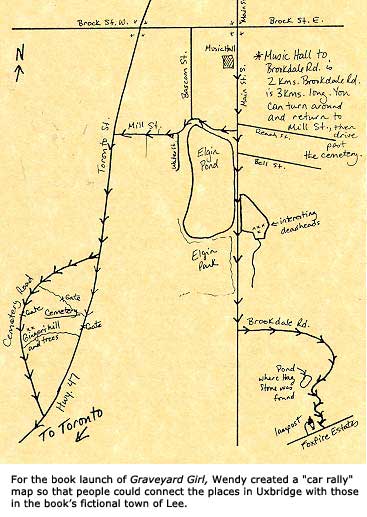
"In 1999, while I was doing the rewrites, two terrible things happened. My father-in-law passed away in January, and my mother-in-law developed lung cancer right after that and passed away in June. It was such a dark time that I didn't know if I could finish the book. The thing that 'unblocked' me was a story I wrote for my husband, a picture book story called 'Robins.' Some robins were nesting on our porch, and the cat next door kept trying to get at them. I was so fiercely protective of those eggs and the baby robins, and that experience grew into a story which I wrote in free verse. It was the first time I'd written a story that way, but it came out so naturally and felt so right. I liked the spareness of it. I had to get back to the rewrites, and 'The Hag Stone' was a major one because so much had to change. I had to age David by four years and tell his story in the first person, and I had such trouble finding his voice. I made a dozen false starts. David's not the kind of person to use a lot of words. He simply wouldn't tell his story in a traditional way. While I don't think readers would know it from the book, I know that David went on to become a songwriter. I would drive up and down the Brookdale Road in Uxbridge (which appears as Leebrooke Road in the story,) and one day it just clicked. 'David thinks in short, crystalline thoughts, like poems or lyrics, so that's how he should tell his story.' I went home and wrote it out and very little changed after that."
That Ginger, the narrator in the opening and closing stories, is in her thirties is somewhat unusual for adolescent literature. Wendy acknowledges that "Peter had some concerns, but since he kept it as the title story, obviously he felt it should be there. The commonly accepted wisdom is that books for young people should have characters the same age as the readers or slightly older. I think that's true, but I don't think young people should be excluded from reading about older people if the themes and their thoughts are of interest to them. When I was 12 and 13, I was reading Thomas Hardy and Charles Dickens and Charlotte Bronte. I wasn't just looking for things about kids my own age. What I hope worked in Graveyard Girl is that, although Ginger's older, her thoughts, at least on this day, are very much back in the past when she was a teenager, and she's working through something triggered by the picture and the article that she saw in the newspaper."
"I know what will happen to all the characters in Graveyard Girl. I could write another book about them. I have notes for 'The Performance,' a story I haven't written on paper, but it's written in my mind. I would love to do more, but I thought I'd wait and see how the first collection was received. If this book doesn't do well and nobody wants to read it, then, of course, there would be no point in doing more. Before Graveyard Girl took its final shape, I wrote a story called 'Siren,' in which Jewel is 28. The story takes place at Mandy's big fairytale wedding, and most of
the characters come back. I think the reason Peter said, 'Hmm, I don't know'' is because he thought that, since the characters were in their twenties, the themes in it were more of interest to adults, and we were trying to keep the collection focussed on teens."
"I got into the habit of getting up in the night to write because I had a baby who would wake me up to feed her. She'd go back to sleep, but I'd be wide awake and thinking. I've really come to love writing then because the house is quiet and dark so I can't see the dirty dishes and piles of
laundry, which are incredibly distracting during the day. Amelia, who's in junior kindergarten now, goes on alternate days, and Maddie goes to a day care for six hours during that time, and so I try to write what I can. That six hours goes by so fast. My mother and husband give me a few hours
when they can. Last year we got a laptop computer which is terrific because now when I have a two or three hour block of time, I can go to my mother's house, which is ten minutes away. She has a little library room, and I go in, shut the door and write, but I still get up in the night."
"Right now, I feel that four picture books and a chapter book are quite ready to be sent out. One picture book about a sea turtle won the Writer's Union of Canada Writing for Children contest last year and also helped me get a Canada Council Grant to research sea turtles in Costa Rica .
When I'm working at home on my picture book stories, I read stories into my daughters' Fisher-Price tape player, the one with the microphone attached by the big yellow cord. Then, I can go and do something, like fold laundry, and listen to the story. I pick up things that I don't when I'm just reading aloud, such as when it's dragging."
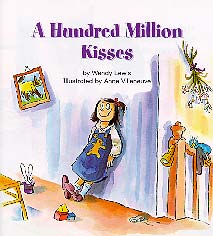
"I also have a young adult novel that I want to get back at. I wrote the first draft in 1997, but it has huge gaps and flaws. I had written about a third of the novel by the time Amelia was eighteen months old and I was pregnant with Maddie. I knew that after the baby came, I probably wouldn't
have the time or energy to write a novel. You can do picture books and even short stories with bits of time, but novels demand a longer, more focused, time commitment. On a Saturday morning, my husband, Rob, took Amelia to his parents' place in Deep River, and I rushed up to the computer and wrote the rest of the novel. I slept three hours that night, but I finished it before they came home Sunday evening. It's called 'The Wind Egg,' and has a female central character, mystery, and skydiving. My husband's passion is skydiving." [Since this interview, Wendy finished
rewriting the novel, which is now called 'Freefall,' and is being considered by Red Deer Press for publication in 2002.]
"I definitely need deadlines. When something's slow in the writing, I'll say to Peter, 'Will you just tell me that you want to see this finished by September 1, and I have to believe that you mean it and then I'll do it for you.' I think that need for firm deadlines goes back to university. In high school, I was much more conscientious about starting my projects, but in university, majoring in English lit, we were doing a Shakespearian play or two in addition to an American and a Canadian novel every week. Because there was so much to read plus the papers to do, there was a lot of last minute writing. I'd 'hem and haw' for a while, but when the deadline loomed, my thoughts would come together. If I start writing too soon, what comes out isn't much good. For me, thinking things through is necessary. In the first drafts of the Graveyard Girl stories which came out so quickly, the characters' voices sounded too similar, or too much like me. As I rewrote them, I learned more about each character and how he or she would speak."
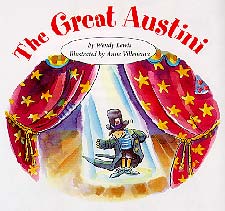
"In 1999, I had three stories published in the 'Collections' series of Grade 2 readers done by Prentice-Hall Ginn, now Pearson Education. One of the workshop members in Peter's class, Liz Stenson, used to work for them, and she told us about the series and the theme - family relationships. I wrote and submitted 'A Hundred Million Kisses,' what I now call my 'sanitized story.' It includes cold kisses and stinky kisses, but some kisses didn't make it -- such as the corn-on-the-cob kiss an uncle plants on his niece's arm. 'Oh no,' the publisher said. 'You can't have an uncle kissing a little girl.' I understand, but it surprised me at the time. They commissioned the other two stories and needed them within two weeks. 'The Great Austini' was my idea. The theme was performance. They had the story idea of an immigrant child participating in a food bank skateathon, and that became ''Food Bank Souper Heroes.' "
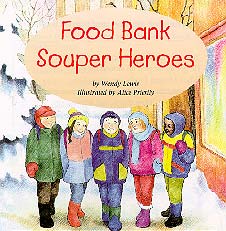
"In his classes and workshops, Peter stresses that people write because they want to write or because they feel driven to write. He emphasizes, 'Don't expect to be published. Don't quit your day job.' He'll say that over and over again because you have to love the process, and it's so hard
to get published that it may never happen. Some of the stories I hear in Peter's workshops are excellent, and you know they are marketable and will be published, but other stories blow me away with their originality, and it's sad to think many of them probably won't be published because they're not what the masses are demanding, or what the publishers feel comfortable doing, but thank goodness those authors wrote them down. Now they exist, and we are the lucky ones for having the pleasure of hearing them."
